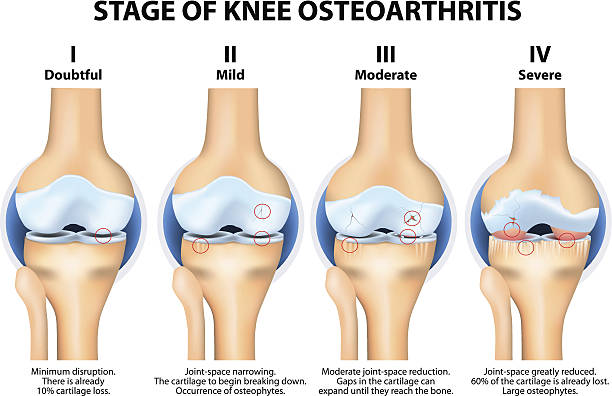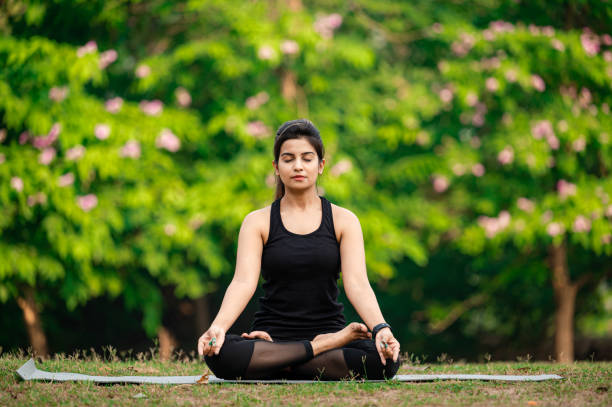Knee pain is a common complaint among people of all ages and can be caused by a variety of factors, including injury, overuse, or underlying medical conditions. In this blog, we will explore the causes, symptoms, and treatment options for knee pain.

Causes of Knee Pain
-
Injuries: Knee injuries are one of the most common causes of knee pain. These injuries can occur due to trauma, falls, or accidents. Some of the common knee injuries include ligament tears, meniscus tears, and fractures.
-
Arthritis: Arthritis is a condition that causes inflammation in the joints, including the knee joint. This can cause pain, stiffness, and swelling in the knee.
-
Overuse: Overuse of the knee joint can lead to pain and discomfort. This is often seen in athletes or people who engage in repetitive activities that put stress on the knee joint.
-
Tendinitis: Tendinitis is a condition where the tendons that attach muscles to bones become inflamed. This can cause pain and swelling in the knee joint.
Symptoms of Knee Pain
The symptoms of knee pain can vary depending on the underlying cause. Some of the common symptoms include:
-
Pain: Knee pain can be sharp or dull and can be felt in different parts of the knee joint.
-
Swelling: Swelling in the knee can be caused by inflammation, injury, or arthritis.
-
Stiffness: Stiffness in the knee can make it difficult to bend or straighten the knee.
-
Clicking or popping: Some people may experience clicking or popping sounds when they move their knee.
Treatment Options for Knee Pain
-
Rest: Resting the knee can help reduce pain and inflammation. This may involve avoiding activities that put stress on the knee joint.
-
Ice and heat therapy: Applying ice or heat to the knee can help reduce pain and inflammation.
-
Physical therapy: Physical therapy can help improve the strength and flexibility of the knee joint, which can help reduce pain and improve mobility.
-
Medications: Over-the-counter pain medications, such as acetaminophen or nonsteroidal anti-inflammatory drugs (NSAIDs), can help reduce pain and inflammation.
-
Surgery: In some cases, surgery may be necessary to repair a knee injury or treat an underlying medical condition.
Prevention of Knee Pain
To prevent knee pain, it is important to maintain a healthy weight, exercise regularly to strengthen the muscles that support the knee joint, and wear appropriate footwear when engaging in physical activities. Additionally, it is important to warm up and stretch before exercise and to use proper form and technique when engaging in physical activities.

Yoga can play an important role in reducing knee pain and improving knee function. Here are some ways in which yoga can help:
-
Strengthening the knee muscles: Certain yoga poses can help to strengthen the muscles that support the knee joint, such as the quadriceps, hamstrings, and calves. This can help to improve knee stability and reduce the risk of injury.
-
Increasing flexibility: Yoga can also help to increase flexibility in the knee joint and surrounding muscles, which can reduce stiffness and improve range of motion.
-
Improving balance: Many yoga poses require balance and stability, which can help to improve balance and reduce the risk of falls and other knee injuries.
-
Reducing inflammation: Some studies suggest that certain yoga practices, such as pranayama (breathing exercises) and meditation, may help to reduce inflammation in the body, which can contribute to knee pain.
-
Promoting relaxation: Yoga can also help to promote relaxation and reduce stress, which can help to manage chronic knee pain and improve overall well-being.
It is important to note that not all yoga poses may be appropriate for individuals with knee pain or knee injuries. It is recommended to work with a certified yoga instructor who can provide modifications and guidance on which poses to avoid or modify to suit your individual needs. Additionally, it is important to always listen to your body and avoid pushing yourself too hard, as this can worsen knee pain and lead to further injury.
Why knee pain is common as we get old?
Knee pain is common in old age for several reasons, including:
-
Osteoarthritis is a common form of arthritis that is caused by the breakdown of cartilage in the joints. It is more common in older adults, and can lead to knee pain and stiffness.
-
As we age, the cartilage in our joints may become thinner and less able to absorb shock, which can contribute to knee pain.
-
As we age, our muscles may become weaker and less able to support the joints, which can increase the risk of knee injuries and pain.
-
As we age, we may become less active and mobile, which can lead to stiffness and reduced range of motion in the knees.
-
Previous injuries to the knee, such as a torn meniscus or ligament, can increase the risk of knee pain in old age.
-
Older adults may be more likely to have other medical conditions that can contribute to knee pain, such as diabetes, gout, or rheumatoid arthritis.
While knee pain may be more common in old age, it is not a normal part of aging and should not be ignored. It is important for older adults to maintain a healthy weight, exercise regularly, and seek medical attention if they experience knee pain or other joint problems. With proper care and treatment, many cases of knee pain in old age can be managed effectively.
Common Questions about Knee Pain
Q: What are some common knee injuries?
A: Common knee injuries include ligament sprains, meniscus tears, and patellar tendinitis.
Q: What are the symptoms of knee pain?
A: Symptoms of knee pain can include swelling, stiffness, tenderness, redness, warmth, and difficulty moving the knee.
Q: How is knee pain diagnosed?
A: Knee pain is typically diagnosed through a physical exam, medical history, and diagnostic tests such as X-rays, MRIs, or blood tests.
Q: How is knee pain treated?
A: The treatment for knee pain depends on the underlying cause, but may include rest, ice, compression, elevation, physical therapy, medication, and surgery.
Q: Can knee pain be prevented?
A: Knee pain can be prevented through measures such as maintaining a healthy weight, exercising regularly, stretching before physical activity, wearing appropriate footwear, and avoiding activities that put excessive strain on the knees.
Q: When should I see a doctor for knee pain?
A: You should see a doctor for knee pain if it is severe, persistent, or accompanied by other symptoms such as fever or difficulty walking. You should also seek medical attention if you have a history of knee problems or if you have experienced a recent injury.












